
Google launched the first Product Reviews Update in April of 2021 and it’s been fascinating to watch the evolution of the system over time. With each successive update, you can see Google fine-tuning the system, expanding to other languages, and more. And now we have the next step in its evolution, and it was a big step. The Product Reviews Update is now just the Reviews Update, and that change has significant ramifications for publishers across the web.
With the change to the Reviews System (notice “Product” has been dropped), the system now evaluates any content that can be considered a review or recommendation. For example, Google explains in its updated documentation that the system is “designed to evaluate articles, blog posts, pages, or similar first-party standalone content with the purpose of providing a recommendation, giving an opinion, or providing analysis.” That’s a big jump from focusing on just product reviews. And it also explains why so many sites were impacted by the April 2023 Reviews Update.
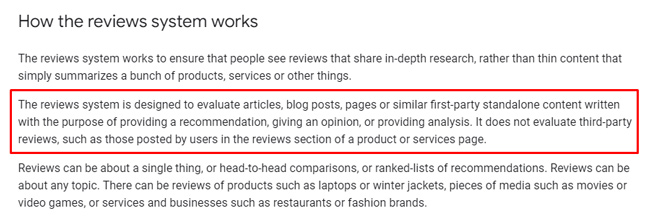
The change has been confusing for many site owners. For example, I’ve heard from many site owners about negative impact when they don’t believe their content contains reviews. The problem is that they are thinking more about product or service reviews and not about recommendations or advice. A lot of content can fall under the latter and that’s what could be evaluated with the new system.
For example, here’s a site focused on restaurant reviews (and even types of food) that I’ve been tracking since early in the rollout. I shared about this on Twitter several times and you can see major impact from the April Reviews Update. They don’t provide product reviews.
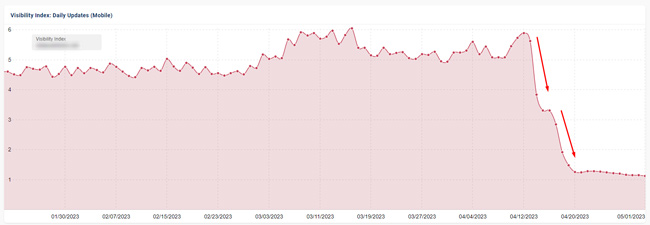
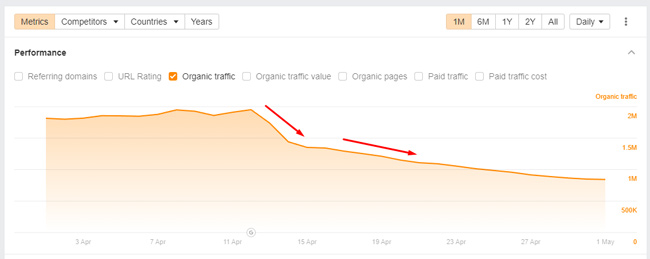
Evolving from the PRU to a broader RU – An important step in the evolution of the Reviews Update:
Beyond just expanding to any type of content that provides recommendations or opinions on something, this latest update marks an important milestone in my opinion. And it signals that the Reviews System is one step closer to being baked into Google’s core ranking algorithm.
As a reminder, Google’s John Mueller once explained that he could see the Reviews System incorporated into Google’s core ranking algorithm at some point. Here is Joh explaining that in a Search Central Office Hours video from 2021:
The reason I have always believed the Reviews System needs to be part of Google’s core ranking algorithm is because of what I’ve called “dueling machine learning systems”. I have covered that topic many times in my posts about Product Reviews Updates and Broad Core Updates and it’s when a site is impacted one way with a major algorithm update (like a broad core update) and then in the opposite way with another major algorithm update (like a Product Reviews Update). That can be maddening for site owners and SEOs, and it really doesn’t make a lot of sense when you think about it. In other words, is the site high quality, or not?
For example, here are three sites impacted heavily by previous core updates or product reviews updates and then reverse direction with the April Reviews Update.
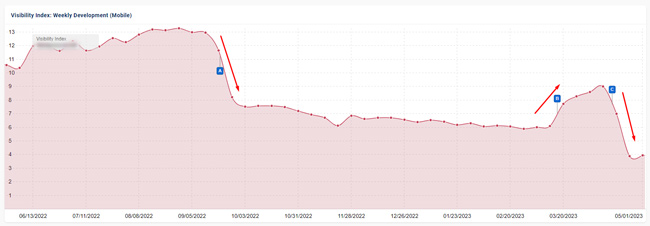
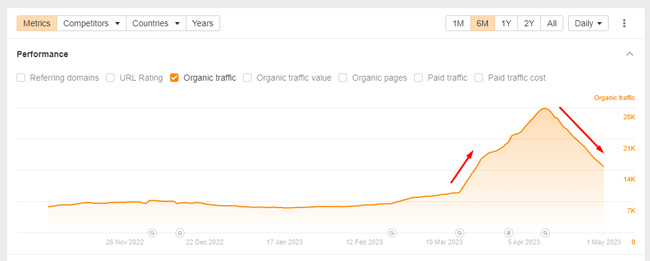
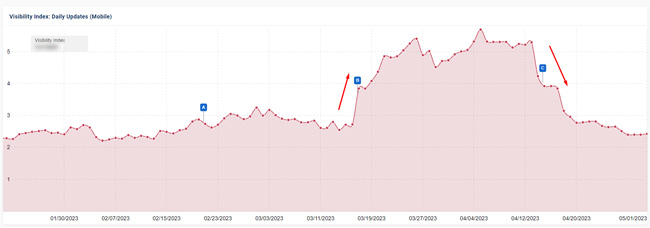
I know site owners are super-confused when a site experiences surges with one update and drops with another (or vice versa). Google is clearly sending mixed signals when this happens, and it underscores the importance of baking the Reviews System into Google’s core ranking algorithm. Time will tell whether that happens, but I think the latest changes with the April Reviews Update signals it’s one step closer to that happening.
Powerful Tremor on 4/19 – A really big one.
As the April Reviews Update started rolling out, I was documenting the volatility on Twitter. Although there was volatility, little did I know what was coming on 4/18 into 4/19… That’s when there was SERIOUS VOLATILITY based on Google pushing a tremor with the update.
I have covered what I call “tremors” many times in my posts about major algorithm updates and they are important to understand. Back in medieval Panda days, Google’s John Mueller explained that Google can make tweaks and adjustments during a rollout based on what they are seeing in the SERPs. And based on analyzing tremors over time, those smaller tweaks can have a big impact across the web. For example, sites reversing course based on early impact.
For the Reviews Update, there was massive volatility starting on 4/19, which was seven days into the rollout. And when I say massive, I’m not kidding. For example, here were several sites heavily impacted on that ****:
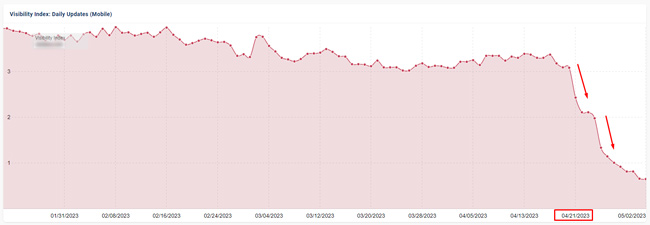
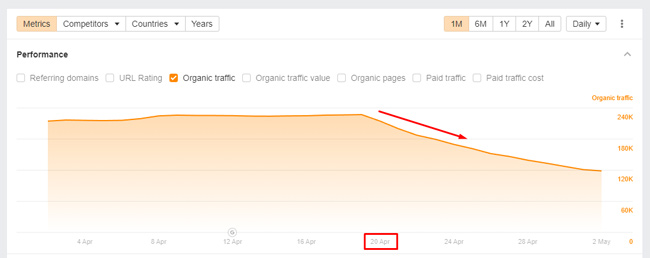

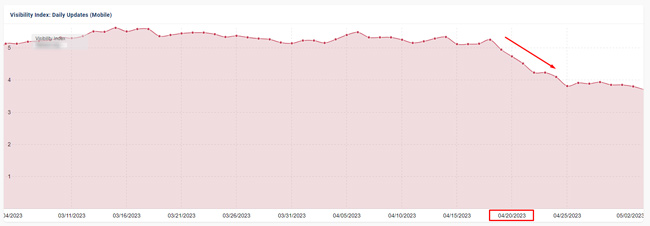
But, as often happens with major algorithm updates, the devil is in the details. There seemed to be several things going on impact-wise with that tremor. For example, it looked like Google could have refreshed a site-level quality algorithm (or something similar) based on what I was seeing across a number of sites impacted. And then I also saw impact on larger publishers where Google seemed to get better at finding reviews content on those sites. i.e. Google’s “Reviews Radar” seemed to improve with the tremor. I’ll cover more about these two situations below.
Google’s site-level quality algorithms:
First, we know that Google has site-level quality algorithms that can have a big impact on sites during major algorithm updates. For example, when Google refreshes those site-level algorithms based evaluating a lot of data over time, sites can surge or drop heavily. You can often see the impact of those site-level algorithms during broad core updates, Reviews Updates, etc.
In addition, we know Google can always decouple algorithms from broad core updates and run them separately (which could also be site-level quality algorithms depending on what Google is looking to achieve). And that can also have a big impact on sites, and outside of major algorithm updates because they are run separately. We saw that happen a few weeks after the September 2022 broad core update rolled out when some of the largest news publishers surged back in visibility after dropping heavily with the broad core update. There was clearly something off with that update that needed to be rectified. It took a few weeks, but Google did fix the issue.
Here are some tweets of mine where I covered what was happening:
And here is a super-interesting example of what I’m referring to with the April Reviews Update tremor and site-level quality algorithms (or something broader that impacted sites). It’s a site that went through a terrible migration in the fall of 2022 and lost a majority of its search visibility. The site owner reached out to me after the site tanked and it’s been a very bumpy ride for them since the initial drop. Based on analyzing the situation, I have always felt like the site would need a major algorithm update to roll out, which could bring a quality reevaluation. And maybe that quality reevaluation could help turn things around.
Well, that’s exactly what happened with the 4/19 tremor. The site is up 135% since then. Note, they don’t focus on reviews, although the niche has been impacted by previous Product Reviews Updates.
Here is GSC data:
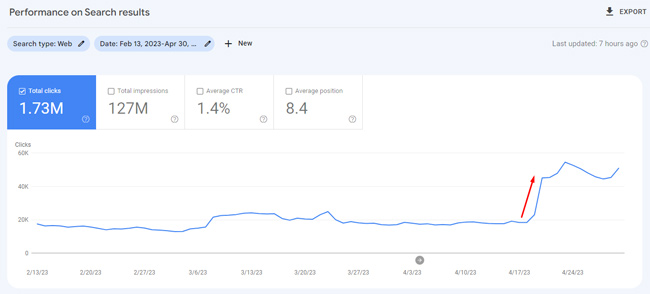
And here is search visibility via arhefs:
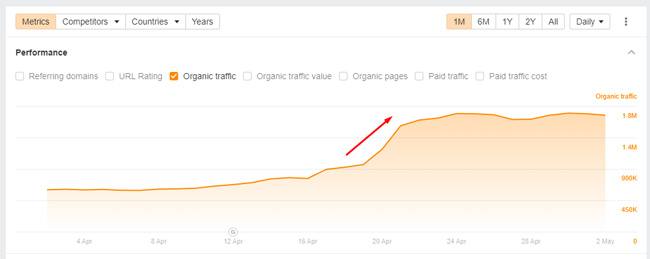
Google’s ‘Reviews Radar’ improves for larger publishers:
Regarding Google getting better at finding reviews on larger publishers, a number of larger publishers were impacted heavily when the update first started rolling out. I’m referring to large sites with a lot of content (mostly not reviews content, but they do have reviews and recommendations content mixed in). And then with the 4/19 tremor, there was some type of correction pushed that reversed some of the impact on larger publishers. But then other larger publishers saw their first impact from the update.
When this was going on, my inbox lit up with emails from larger publishers, I received a number of messages across social media about that, and I saw it across some publishers I’ve helped in the past. Based on digging into the situation, it really looked like Google was evaluating and impacting reviews mixed into larger sites more with the April Reviews Update than previous updates (and then tweaking something related to this with the 4/19 tremor).
For example, when running a delta report to identify queries and landing pages that dropped at that time, while also filtering by content type, there were lower-quality reviews content that dropped heavily. I saw this across a number of publishers.
For example, here are some drops when filtering by reviews content:
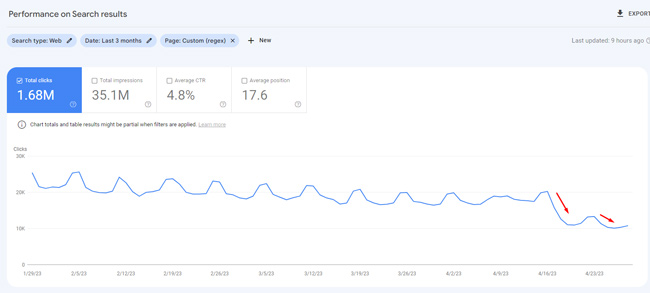
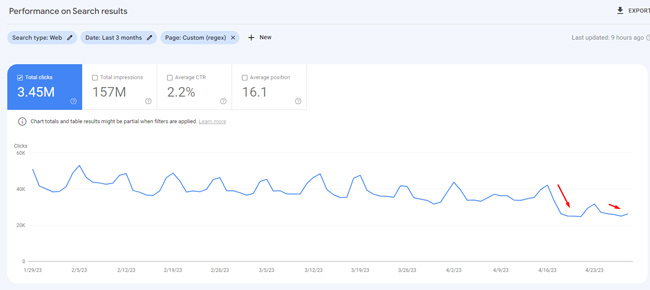
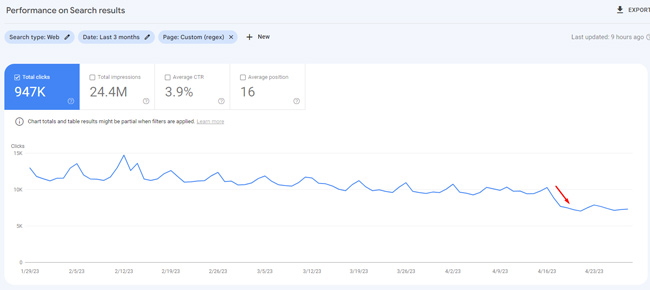
And here are several larger publishers that reversed on 4/19 after initially being impacted when the update started rolling out:
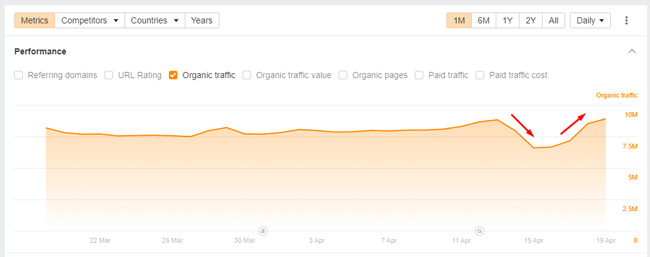

And here are some reversals now that we are further out time-wise:
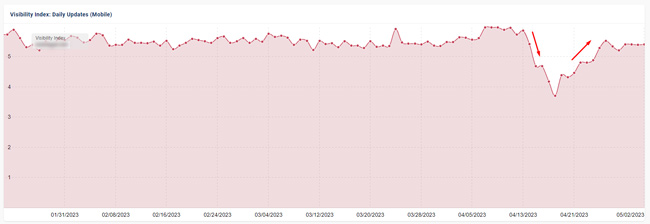
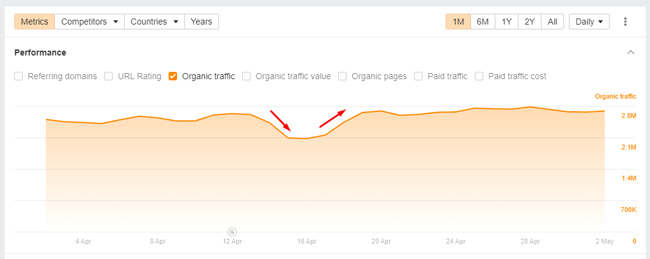
So in my opinion, I think this updated involved Google’s “Reviews Radar” possibly getting better at finding and evaluating reviews content across larger sites that contain a wide mix of content. And then there was some type of adjustment with the 4/19 tremor that reversed some of the impact (for certain publishers). I don’t work for Google, and obviously I can’t say for sure, but the 4/19 tremor sure looked like a mix of a site-level quality algorithm being refreshed (or something similar), and then this enhanced “Reviews Radar” for larger publishers.
A reminder that DURING AN UPDATE IS NOT the time to start improving lower-quality reviews content:
What I covered above is a good example of why site owners should continually be analyzing what I call “quality indexing”. That’s making sure your indexable content is high quality, insightful, etc., and making sure any lower-quality or thin content is not indexable. If you don’t, you can be in a situation where that baggage comes back to bite you during major algorithm updates. And if that happens, you have to start addressing those lower-quality areas over time (and hope you can bounce back during subsequent updates).
For the Reviews Update, any type of content providing reviews and recommendations should provide unique, insightful, and helpful information. In addition, if you are reviewing something, then proving you have first-hand experience with the products, services, etc., is extremely important. Remember, there’s double E-A-T now (E-E-A-T) with an extra E for Experience. Google has plenty of documentation about publishing great reviews content, and you can read my previous posts about Product Reviews Update where I cover the anatomy of excellent reviews content.
As I cover in my posts about previous PRUs, aim to become the Wirecutter for your niche. It’s not easy to do, but that’s the level of quality and thoroughness you should be aiming for.

A quick note about product review sites with wild volatility over time… And I mean wild.
I’ll end this post with a word of caution if you focus heavily on reviews content. Know that there has been crazy volatility over time for some review sites. I have covered this on Twitter a number of times, but I’ll provide two examples below. These are sites that continually surge or drop heavily over time (and both during and outside official Reviews Updates). I cannot explain what’s going on here, but Google clearly has had some issues with the Reviews system. No site owner should have to go through what these sites owners have gone through. This is also why you don’t want to be in the gray area with Google’s algorithms. Get out of the gray and into the clear. That’s the safest way to go in my opinion. Check out the madness below:
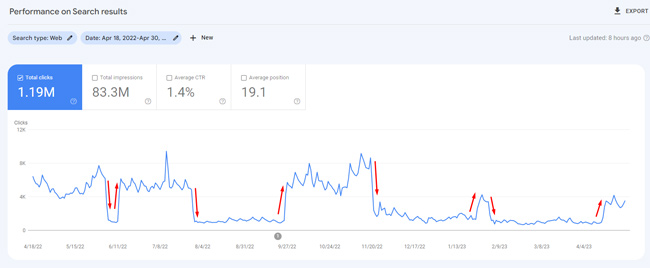
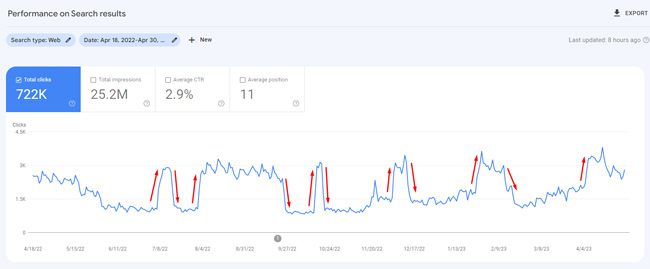
Summary – Google’s Reviews System Continues To Evolve. Evolve with it.
With the April Reviews Update, Google is now evaluating all types of reviews and recommendations content (beyond just product reviews). In my opinion, this marks an important step for Google’s Reviews system and could signal it’s one step closer to being baked into Google’s core ranking algorithm. Time will tell if that happens, and when, but I do think that’s inevitable. In the meantime, it will be interesting to see how the next Reviews update impacts publishers across the web, including the larger publishers I mentioned in this post. As usual, I’ll be covering what I’m seeing across Twitter so make sure to follow me there to see those updates.
GG
